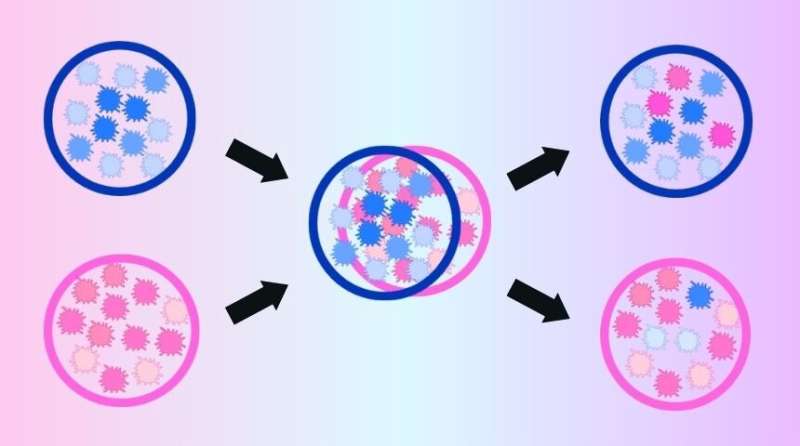This article has been reviewed according to Science X's editorial process and policies. Editors have highlighted the following attributes while ensuring the content's credibility:
fact-checked
peer-reviewed publication
trusted source
proofread
'Sexome' bacteria could help identify sex criminals

In her first publication in the journal Forensic Science International, Ms. Ruby Dixon demonstrated that bacteria can be transferred between a male and female during sexual intercourse and there is a possibility that bacterial colonies may be unique to each individual.
The research was the brainchild of Brendan Chapman, a Senior Lecturer in Forensic Science at Murdoch who has spent more than a decade working with law enforcement at crime scenes and in the laboratory.
The pair have coined the bacterial DNA makeup of the sex organs, the "sexome."
Identifying the perpetrator of a sexual assault is complex and often requires the analysis of human DNA to catch the offender.
But traces of DNA are not always found, such as when semen is not present, making the task all the more difficult for investigators.
"Current techniques for investigating sexual assault work well, however if there aren't enough male cells then there may not be enough to link it to a person using conventional DNA analysis," Dixon said.
"This research shows that we can detect that a heterosexual couple has had intercourse based on the bacteria we find after sex.
"Some 'male bacteria' stays on the female and some 'female bacteria' stays on the male.
"The end goal is that we'll be able to take a swab, analyze the bacteria, and link it back to an individual, or at the very least eliminate suspects."
Dixon explained that even if the bacteria wasn't completely unique to an individual, it would likely be distinct enough to eliminate assault suspects.
"It's like when you buy a packet of M&M's, you know that there are six colors in every packet, so you might say they're identical from the outside," she said.
"However, each packet has a different number of each color—one might have five blue, while another only three—and it goes the same for each color.
"It's similar when it comes to bacteria, although male bacteria may look relatively similar at a glance, we found the composition of each person's bacterial makeup is probably different enough to use for identification."
Chapman said the findings could have a significant real-world impact on investigations.
"This research is a big step forward for forensic science and has the potential to lead to breakthroughs in cases that involve sexual assault," he said.
"We've demonstrated the concept, and the plan is to further investigate uniqueness of individual bacterial fingerprints and the effect of things like contraception and non-heterosexual couples.
"The fact is, we have now demonstrated that bacteria may be just as powerful as conventional forensic DNA but with the added benefit of being available even when male human DNA is undetectable."
Dixon said the next stage of the research will further assess how the new technique can be implemented on a national scale.
More information: Ruby Dixon et al, The Sexome- A proof of concept study into microbial transfer between heterosexual couples after sexual intercourse, Forensic Science International (2023). DOI: 10.1016/j.forsciint.2023.111711
Journal information: Forensic Science International
Provided by Murdoch University





















